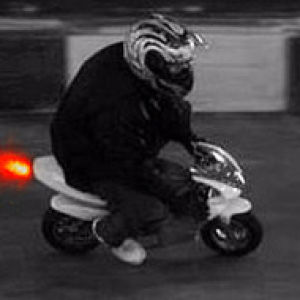No batteries required ??
Another lame blip to add to the journal, our ever faithful sundial in the garden, looking kind of weathered but still works and fairly accurate.
Last night shift tonight and four off so I'll have more time for some better blips in the next few days or so :)
A sundial is a device that tells the time of day by the position of the Sun. In common designs such as the horizontal sundial, the sun casts a shadow from its style onto a surface marked with lines indicating the hours of the day. The style is the time-telling edge of the gnomon, often a thin rod or a sharp, straight edge. As the sun moves across the sky, the shadow-edge aligns with different hour-lines. All sundials must be aligned with the axis of the Earth's rotation to tell the correct time. In most designs, the style must point towards true celestial north (not the north magnetic pole or south magnetic pole). That is, the style's horizontal angle must equal the sundial's geographical latitude.
It is common for inexpensive decorative sundials to have incorrect hour angles, and these cannot be adjusted to tell correct time.
There are different types of sundials: Some sundials use a shadow or the edge of a shadow while others use a line or spot of light to indicate the time.
The shadow-casting object, known as a gnomon may be a thin rod, or other object with a sharp tip or a straight edge. Sundials employ many types of gnomon. The gnomon may be fixed or moved according to the season. It may be oriented vertically, horizontally, aligned with the Earth's axis, or oriented in an altogether different direction determined by mathematics.
With sundials using light to indicate time, a line of light may be formed by allowing the sun's rays through a thin slit or focusing them through a cylindrical lens. A spot of light may be formed by allowing the sun's rays to pass through a small hole or by reflecting them from a small circular mirror.
Sundials also may use many types of surfaces to receive the light or shadow. Planes are the most common surface, but partial spheres, cylinders, cones and other shapes have been used for greater accuracy or beauty.
Sundials differ in their portability and their need for orientation. The installation of many dials requires knowing the local latitude, the precise vertical direction (e.g., by a level or plumb-bob), and the direction to true North. Portable dials are self-aligning; for example, it may have two dials that operate on different principles, such as a horizontal and analemmatic dial, mounted together on one plate. In these designs, their times agree only when the plate is aligned properly.
Sundials indicate the local solar time, unless corrected for some other time. To obtain the official clock time, three types of corrections need to be made.
First, the orbit of the Earth is not perfectly circular and its rotational axis not perfectly perpendicular to its orbit. The sundial's indicated solar time thus varies from clock time by small amounts that change throughout the year. This correction - which may be as great as 15 minutes - is described by the equation of time. A sophisticated sundial, with a curved style or hour lines, may incorporate this correction. Often instead, simpler sundials are used, with a small plaque that gives the offsets at various times of the year.
Second, the solar time must be corrected for the longitude of the sundial relative to the longitude of the official time zone. For example, a sundial located west of Greenwich, England but within the same time-zone, shows an earlier time than the official time. It will show "noon" after the official noon has passed, since the sun passes overhead later. This correction is often made by rotating the hour-lines by an angle equal to the difference in longitudes.
Last, to adjust for daylight saving time, the sundial must shift the time away from solar time by some amount, usually an hour. This correction may be made in the adjustment plaque, or by numbering the hour-lines with two sets of numbers.
- 0
- 0
- Apple iPhone 4S
- 1/50
- f/2.4
- 4mm
- 50

Comments
Sign in or get an account to comment.


